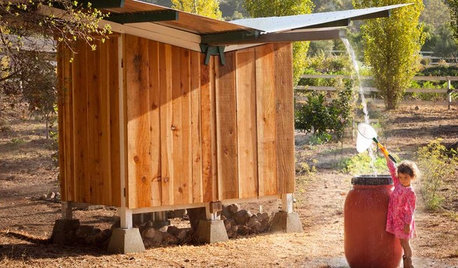How Much Calcium Can You Get From Crushed Eggs?
macthayer
16 years ago
Related Stories

INSPIRING GARDENSWhat We Can Learn From Longwood Gardens’ New Meadow
Sustainability, ecology, native plant communities ... this public garden is brimming with lessons on horticulture for home gardeners
Full Story
FARM YOUR YARDCollecting Rainwater and Eggs From a California Chicken Coop
See how a butterfly roof helps a hen home’s design soar into double-duty territory
Full Story
KITCHEN DESIGNTrending Now: 25 Kitchen Photos Houzzers Can’t Get Enough Of
Use the kitchens that have been added to the most ideabooks in the last few months to inspire your dream project
Full Story
MIDCENTURY HOMESHouzz Tour: How Can We Get Invited to This Awesome Midcentury Home?
A redwood-clad gem in California’s Marin County features a dreamy outdoor oasis with an open-door policy for the homeowners’ friends
Full Story
MOST POPULAR16 Ways to Get More From Your Small Backyard
Make a tight or awkward yard a real destination with these design tricks from the pros
Full Story
COLORDuck Egg Blue, the Friendliest Color Around
This appealing hue transcends trends, spans styles and gets along with many other colors. Could it be right for one of your rooms?
Full Story
ORANGEGuest Picks: Crushing on Orange
Whether you call it tangerine or persimmon, 20 ways to use Pantone's top hue for 2012
Full Story
DECORATING GUIDESBlue Crush: Tranquil Palettes Inspired by the Sea
Mix colors of ocean and sky for serene spaces in any style
Full Story
GARDENING AND LANDSCAPING4 Good Ways to Get Rid of Mosquitos in Your Yard
Stay safe from West Nile virus and put an end to irksome itches with these tools and methods for a porch, patio or yard
Full Story
COLOR PALETTESEaster Egg Inspiration: 9 Great Ways to Use Pastels
Mint green, light aqua, pale pink, blossom yellow and soft lavender can bring spring beauty into your home
Full Story





bpgreen
Kimmsr
Related Professionals
Comstock Park Landscape Architects & Landscape Designers · East Rancho Dominguez Landscape Architects & Landscape Designers · Salisbury Landscape Architects & Landscape Designers · Jackson Landscape Contractors · Cockeysville Landscape Contractors · Cupertino Landscape Contractors · Hampton Bays Landscape Contractors · Plainview Landscape Contractors · Plantation Landscape Contractors · Tyngsboro Landscape Contractors · Solana Beach Decks, Patios & Outdoor Enclosures · Welby Decks, Patios & Outdoor Enclosures · Bellingham Decks, Patios & Outdoor Enclosures · Fort Myers Decks, Patios & Outdoor Enclosures · Portland Decks, Patios & Outdoor Enclosurespaulns
macthayerOriginal Author
gardener_sandy
digdirt2
Belgianpup
Kimmsr
macthayerOriginal Author
Demeter
yursugarmyspice
jolj
tapla (mid-Michigan, USDA z5b-6a)
jonhughes
jolj
tapla (mid-Michigan, USDA z5b-6a)
wayne_5 zone 6a Central Indiana
Michael
Kimmsr